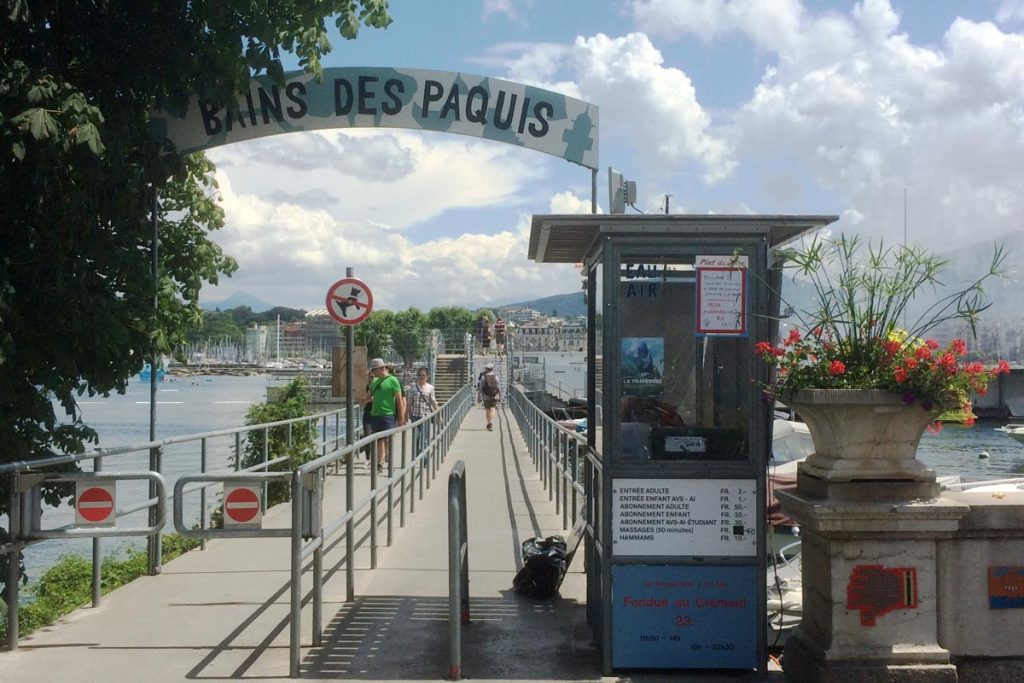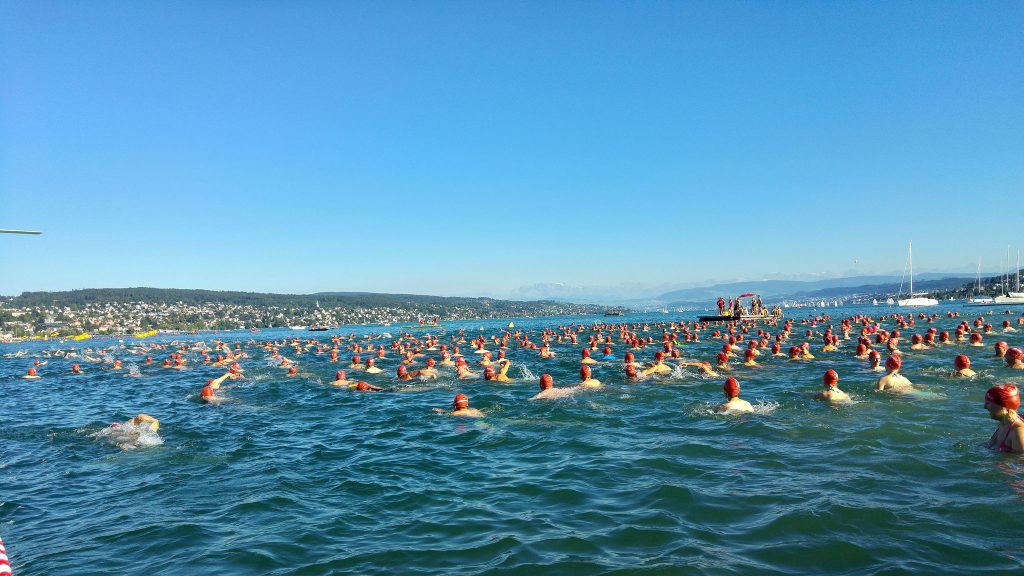Swimming in Switzerland is one of the country’s most beloved summer pastimes.
With its crystal-clear lakes, gentle rivers, and breathtaking alpine scenery, the water is easy to be tempted by, especially when it’s as hot as it was a few weeks ago!
But is it actually safe to dive straight into the water?
Let’s explore the facts—accident statistics, river vs. lake safety, essential tips—and discover the best places to enjoy open-water swimming safely in Switzerland.
Are Swimming Accidents Common in Switzerland?

While Swiss waters are among the world’s cleanest, open-water swimming has risks, as you may know.
Each year, between 45–60 people drown in Switzerland
… and nearly all accidents happen in open water, not in pools.
In 2024 alone, 52 drownings occurred in rivers and lakes, compared to zero in supervised swimming pools.
Men, especially young adults, are most at risk, often due to excessive drinking, overconfidence, or misjudging currents and water temperatures. Yes, us guys seem to do dumb stuff more readily, if you had not noticed!
Are Rivers More Dangerous Than Lakes?
Rivers are generally more hazardous than lakes:
- Rivers like the Aare or Rhine may look calm on the surface, but currents can be deceptively strong. Rescue data shows almost 90% of drowning incidents occur in rivers.
- Lakes are safer in calm conditions, but risks still exist, especially from sudden drops in depth, boat traffic, and cold water temperatures.
If you’re not an experienced swimmer, stick to lakes and designated swimming areas with gentle slopes, clear signage, and facilities. And in paid simming areas, you also get lifeguards to keep an eye on your!
Tips for Safe Swimming in Swiss Waters

Here’s how to enjoy your swim while staying safe:
1. Never Swim Alone
Always go with a friend, and keep an eye on each other, especially in rivers or remote spots.
2. Stay Sober
Alcohol is a leading factor in drownings. Avoid it before and during swimming.
3. Know the Conditions
Use apps like Aare Guru (for river temps and flow) or check local signage for warnings. Avoid swimming after heavy rain when water flow increases.
4. Enter the Water Slowly
In glaciers and springs that feed Swiss lakes, cold-water shock is real. So, enter gradually and avoid jumping into unfamiliar waters. Don’t be swayed by “what the locals” are doing. They live here!
5. Be Visible
Use a swim buoy or bright swim cap in open water. It helps others (and boats) spot you. You can often buy cheap floating noodles or devices in places like big Migros supermarkets.
6. Supervise Children Closely
Always keep kids within arm’s reach, even in shallow water. Use certified flotation aids—but don’t rely on them alone.
Want To Save This For Later?
How Clean Is the Water?
Very clean. Switzerland has some of the highest water quality standards in Europe. Over 97% of bathing spots meet at least “sufficient” quality, with most rated as “excellent.” That said, always follow local advice during algae blooms or after storms.
Best Places to Swim in Switzerland
Ready to dive in? Here are some of the most iconic and safe places to enjoy a swim in Switzerland:
🏞 Aare River in Bern
This is Switzerland’s most famous river swim, floating from Eichholz to Marzili.
At Marzili, there are marked entry/exit points, grassy picnic areas, and lockers and showers. It is ideal for confident swimmers—use a dry bag or buoy and check the Aare Guru app before you go.
🌅 Lake Geneva (Lac Léman)

With sweeping mountain views and lidos in cities like Montreux, Lausanne, and Geneva, Lake Geneva offers both beauty and safety.
Most towns have free public beaches with lifeguards in summer, like Bain des Paquis in Geneva itself (seen above).
👉👉 There are many more Swiss Lakes to swim in
🏖 Lake Zurich

In summer, Zurich locals love the lake, head to Strandbad Mythenquai or Tiefenbrunnen for grassy areas, changing rooms, and snack bars. Paddleboarding and swimming are both popular around here.
👉👉 There are many more options in this post

Swimming in the Limmat River downstream from the Zurich central station is also popular. There are both the Upper and Lower Letten swimming areas, with the Upper having a free area. People also enter the river here for a downstream “drift” in rubber boats to Dietikon.
Just be careful if you try this, as I have seen people get sucked towards the turbine there, and it can be dangerous despite how calm it looks!
🌴 Lake Lugano
Swim with a view of palm trees and mountains in Ticino! The Lido di Lugano has diving boards, a sandy beach, and swimming lanes.
🌊 The Rhine in Basel
You’ll see dozens of swimmers floating through Basel with their Wickelfisch bags (dry bags that double as flotation). A favorite for locals, the river is monitored in summer and even used as a commute by some residents!
Final Thoughts
Yes, swimming in Swiss lakes and rivers is safe if you take the proper precautions. Stick to designated areas, respect the water, and know your limits. That means, if you are not a super strong swimmer (like me) avoid the rivers.
The rewards? Unforgettable swims in some of Europe’s most pristine and scenic waters.
So pack your swimsuit and towel, check the conditions, and dive into a truly Swiss summer experience!


